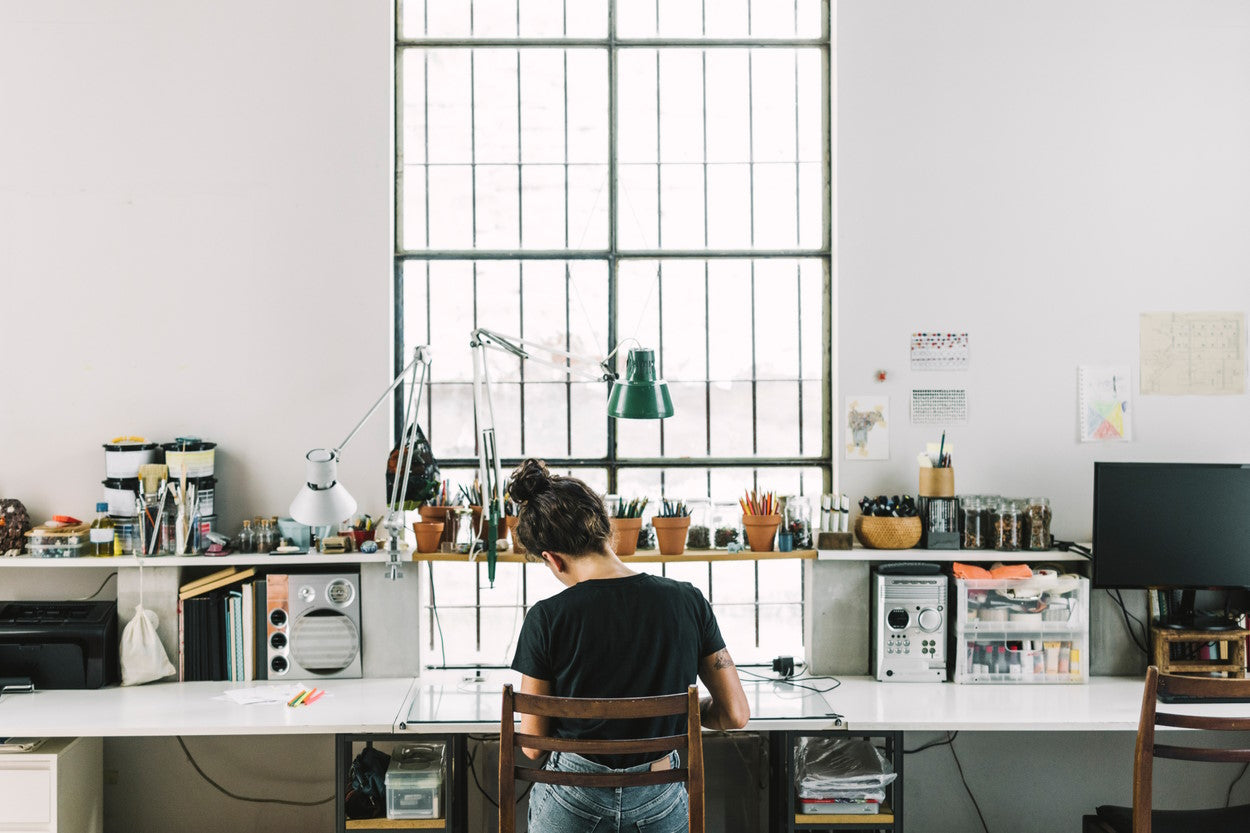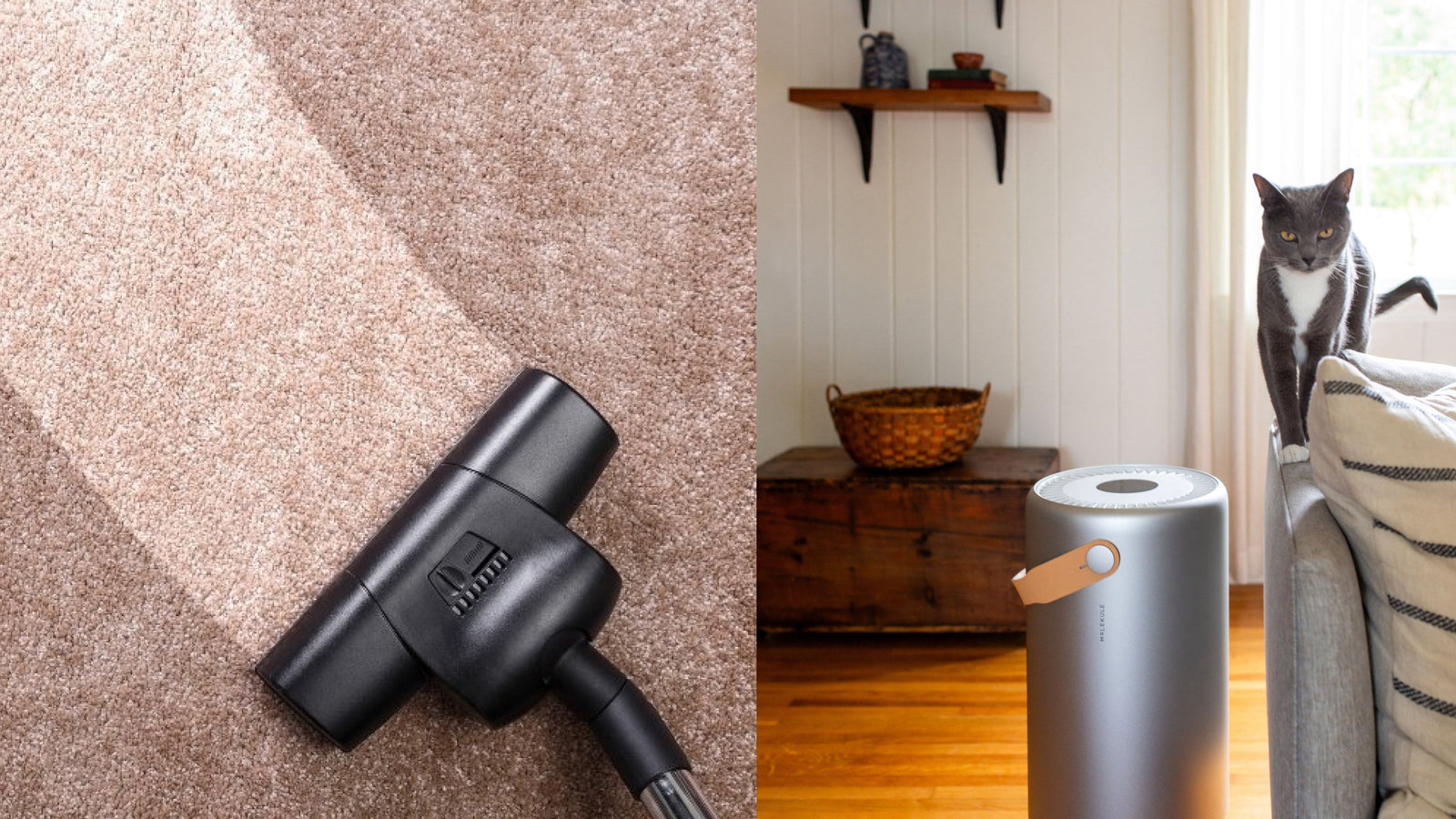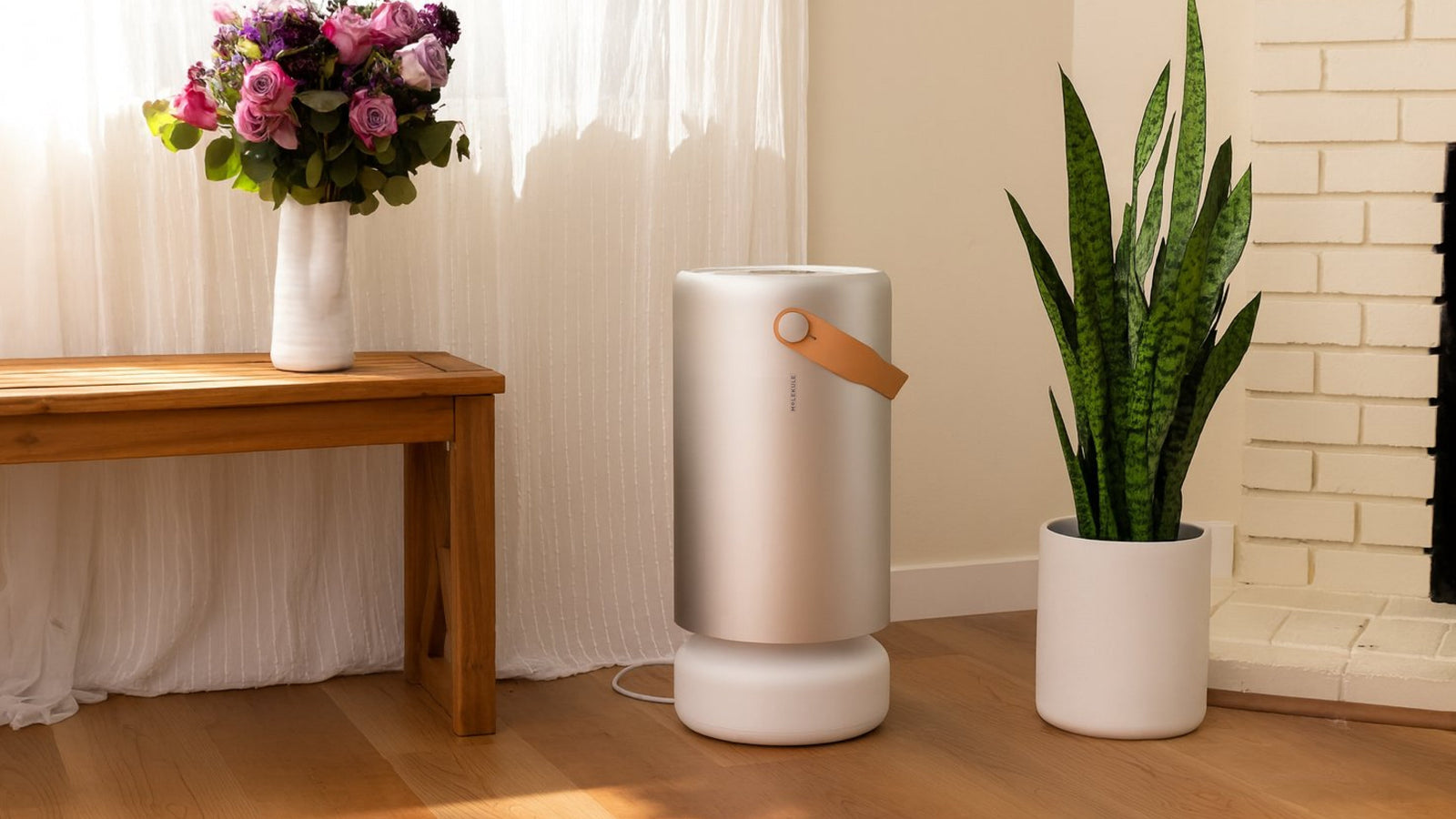The indoor office environment has a reputation for making us sick due to mold, cleaning chemicals, infectious coworkers, and quite a few other factors. One benefit offered by working from a home office is a lot more control over indoor air quality, from open windows to electronics.
The small space of home offices means that pollutants can build up quickly, but also makes for easy ventilation, filtration, or regular cleaning. Let’s take a look at a few home office essentials for removing pollution from your indoor air and some ways to stop it at the source.

Furniture That Doesn’t Pollute
One of the biggest contributors to indoor air quality is volatile organic compounds, or VOCs, which is the chemical term for almost any substance that evaporates into the air and is carbon-based. They include smells from living things or food, solvents in paint or other non-water based products, any artificial scents from perfume or cleaning products, and a long list of other airborne substances. Most of them are not harmful in a properly ventilated room, but when allowed to accumulate can have a huge negative impact on air quality.
The lacquers, stains, paints, and other sealants that keep moisture out of the wood used in furniture is generally some kind of resin or plastic dissolved in a VOC solvent. After it soaks into the wood, the solvent evaporates over a few hours or days and leaves behind a dry waterproof coating. However, we all know freshly lacquered wood still has a potent smell after it is dry to the touch, which means our nose is detecting the solvents that are still evaporating into the air.
VOCs and other chemicals like ammonia are not only common byproducts of treating wood but can be released from furniture or building materials for years. Formaldehyde is a VOC of particular concern because it is odorless, carcinogenic, and often evaporates from freshly treated wood products.
Avoid furniture that is a source of pollution
The issue varies considerably from product to product. One study on VOC emissions from different pieces of furniture found their dining table emitted more than the sofa, which was more than the desk chair, followed by the bedside table, with a cabinet as the safest. These results are unlikely to translate directly into the real world apart from how much each piece of furniture will vary.
There are many detectors available that can measure the total VOC concentration in the room, including stand-alone devices or integrated into air purifiers like Molekule’s Air Pro. If VOCs are high (over around 1500 ppb), and there are no other sources of VOCs like alcoholic beverages, cleaning products, or essential oils, then you may consider removing newer pieces of furniture, starting with plastic and wood products. When getting new furniture, you can also seek out low-VOC versions.
Ventilate, destroy, or capture
When the source can’t be found or removed, then ventilation is always the best immediate solution. If ventilation is not an option then an air purifier designed to remove VOCs like one with a carbon filter to remove them or Molekule’s PECO technology to destroy them will work to reduce the VOC concentration.

Electronics that Don’t Off-gas
Wooden furniture isn’t the only source of VOCs indoors, there are several other indoor products with solvents or manufacturing processes that result in VOC emissions during use. Inks and toners used by printers and photocopiers are dissolved much like paints and lacquers, and also evaporate into the air. One study on printers and photocopiers found they increased very hazardous substances in the air like ozone and benzene. There was also the presence of fine particles in the air, which can form from chemicals like ozone and benzene interacting in the air. Laser printers in particular seem to produce a particularly toxic mix of particles.
Most forms of plastic release VOCs at very low levels for very long times, and if heated can break down and produce significantly more. 3D printers with their hot extrusion processes can be sources of indoor air pollution and should be vented if possible. Even LCD screens can be sources of gasses that spoil the air.
Avoid electronics that degrade air quality
This is a slightly different hazard than from wood products, because these devices can also produce low levels of ozone that can still be enough to promote the formation of unhealthy particles. They are practically no manufacturers of “green” or low-VOC electronics, but you can use a TVOC meter, ozone detector, or your nose to tell if air contamination is building up.
Blow them away, grab them, or destroy them
Ventilation is always the best solution, but carbon captures and PECO destroys. Remember that like all other filters, carbon and PECO must be changed according to the manufacturer’s direction.

Make It Smell Right
The healthiest scent for your working space is probably no scent at all. Scented cleaning chemicals and essential oil diffusers both use the similar extracts or artificially produced fragrances, all of which are VOCs that are basically harmless in well-ventilated environments.
But if allowed to concentrate indoors, these smell-carrying VOCs can react in the air with oxidizers like ozone to form radicalized ultrafine particles. These particles keep the oxidizing power of ozone as free radicals on their surfaces, and are extremely small because they formed from a few molecules sticking together. They are easily inhaled and passed into the bloodstream, their free radicals can cause cancer and many other diseases in the body. Some estimates indicate that the secondary particles that form from VOCs, not the primary particles we see in exhaust or smoke, cause the majority of cardiovascular and respiratory problems from particle pollution.
Cleaning chemicals in particular lead to this issue because oxidizing agents like bleach accelerate the formation of particles containing that bleach. Some researchers who published an article in 2022 indicated that inhaling the air where such chemical cleaners with scents have been used is similar or worse than breathing out of a car exhaust pipe.
Go green when you clean
Getting rid of the source of these pollutants should be easy, just switch to hot water and regular unscented soap to cut grease and reduce surface pathogens. During the Covid pandemic the CDC had the following to say about disinfecting with bleach, “in most situations, cleaning alone can remove most germs, such as harmful viruses or bacteria, on surfaces.”
Essential oils can spoil
If extracts of essential oils are offering benefits like stress relief or just a better feeling while working, try to keep your space ventilated so the smells are blown out the window on the way past your nose. Once airborne and surrounded on all sides by the atmosphere you can think of them like any other freshly prepared substance you put in your body, after a few hours of exposure they spoil. With less time in the room the airborne oils will have less of a chance to pick up free radicals or become fine particles.

Don’t Let it Smell Wrong
In addition to making sure you aren’t adding any unnecessary gasses to your air, it’s also important to be sure there aren’t too many natural sources, either. Most indoor odors come from food and living bodies, not objects brought in from outside.
Some smells can indicate serious health hazards and should be dealt with immediately, such as the smell of mold or decay. A decomposing animal can attract disease-carrying vermin and microbes. But working in a space where laundry, old food, or anything else is spreading an odor that is unpleasant reduces our overall feeling of well-being. Trying to get work done while there is a persistent bad smell can be difficult because bad odors can foster a combination of bad moods, including depression, fatigue, confusion, anger, and overall tension. At least one study found that bad smells make focusing on complex tasks more difficult.
Hunt down the problem
Finding the source of the smell and cleaning or removing it is the best way to prevent this issue. Any pervasive odor can indicate excessive VOCs at best and toxic mold spores at worst.
Open a window or turn on the purifier
If it is difficult or impossible to remove the smell, ventilation is the next best solution, but can also spoil air conditioning or heating. As with all the smelly air hazards we have mentioned so far, a stench is a cloud of VOCs, so using an air purifier can help. Just be sure it’s equipped with a smell-removing technology like a fresh carbon filter or PECO.

Clean Surfaces
Almost all of the bacterial, fungi, and microscopic creatures that live in your home are harmless and may even fight with pathogens for dominance. But there are a few ways to minimize the impact of the few pathogenic species that are out there.
Mold is a fungus that spreads by dusting an environment with tiny, almost invisible spores. If the spores land in a place with water and food, it will grow into a colony of many tiny roots and stems. As it grows, parts of the colony can dry out and flake off into the air when disturbed, filling it with tiny fungal fragments that can be easily inhaled. The fungal toxins in mold fragments can cause allergies even in people who weren’t previously allergic.
Sniff out the issue
Follow your nose, the VOCs released by mold will have a strong and unpleasant musty smell. It can only grow where there is moisture, so seek out spaces beneath sinks or under window sills. If you do find the telltale discolored patches, you can remove it by scrubbing with hot water and soap, but it can and will return in a few days if it has spread deep or if the excess moisture is not handled. Persistent mold can present a health hazard, so if you can’t eliminate it yourself with the first few attempts call a professional.
Buttons are great petri dishes
The few other pathogenic microbes to watch out for in the home office aren’t airborne, but still might merit a little attention, and they all live in your mouse and keyboard. Your input devices can harbor E. coli, staphylococcus, salmonella, and other disease-causing bacteria. Refrain from eating at your desk so food residue isn’t available as a place to live, and try to get in the habit of washing your hands before and after eating.
We will continue to share easy ways to stay healthy on Facebook, Instagram, Twitter, and on the Molekule blog.







